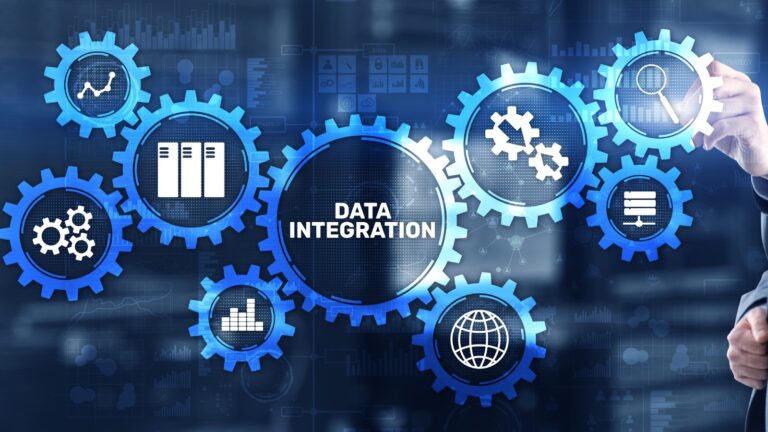
Middleware is software that bridges the operating system with the applications in a distributed network. It is sometimes referred to as plumbing since it connects two applications together for data to pass between a pipe easily. Therefore, middleware is a tool that facilitates communication between tools, databases and applications, providing unified services. It integrates multiple web and application servers, content management systems and others to support application development and delivery. It is known to be extremely helpful in companies implementing a multi-cloud environment, as it makes it easy to process data and connect different applications. From simply being a mediator between an application’s front-end and back-end resources, the functions of middleware have extended over the years. This article will act as a guide to comprehensively understand middleware.
How Does it Work?

Say a person wants to see an image or would want to see a detailed account of past banking transactions. The data that responds to these requests are usually stored in different places, including file servers, messages or a database. Middleware makes this back-end process much faster, safer and more efficient through its architecture. It does this by using one common messaging framework such as JSON, XML, REST and SOAP. It can also handle applications written in multiple languages like Python, Java, C++ and PHP. The great thing about middleware is that it can retrieve the most relevant information based on the request. For example, if the language header of a request is set in English, the middleware will ensure that the results are in English. It can also provide the most relevant information based on the user’s location using their GPS coordinates, thereby performing an important role in providing logic and customising results to the situation. Middleware can further manage traffic flow and prevent an application or file server from being overwhelmed.
Types of Middleware

Multiple forms of middleware exist today, which range between the type of connectivity it provides and the type of application, components or devices it can connect with. Here are some of the most famous middleware types:
- Message-Oriented Middleware (MOM): This is the most widely used middleware system. MOM provides an infrastructure that supports the retrieval and sending of messages over distributed applications. It specialises in asynchronous communication.
- Object Middleware: Also known as an object request broker, it uses an object-oriented system to retrieve and send objects and services. It is a run-time software that allows objects to work collaboratively with a container program or another object.
- Remote Procedure Call (RPC) Middleware: RPC calls procedures on the remote system and is used to perform synchronous or asynchronous interactions between applications. This means it uses one app to invoke procedures in others as if they are local calls.
- Embedded Middleware: This type of middleware helps the company to develop and deliver better integration frameworks through a program or hardware inference. Also known as integration middleware, it bridges embedded apps with real-time operating systems.
- Portals: Although not strictly middleware, it is classified as such since it permits front-end integration and promotes interaction between the client machines and back-end platforms. It is also known as enterprise portals.
Advantages of Middleware

The advantages of middleware are not limited to processing data across various systems. Here are three ways how middleware can improve your operations:
Inspires Innovation

As technology is increasing at a rapid pace, the number of digital applications businesses are encouraged to use and integrate into their operations is only multiplying. The more applications that are integrated, without the proper infrastructure to connect them together, the combined effect of the advanced technologies cannot be experienced. Hence, by implementing the most suitable middleware for a company’s operation, the middleware helps companies to experience innovation in the organisation.
Cost Effective

Middleware allows companies to implement standard procedures and develop applications with less effort, resources and costs. Since it focuses on automating a range of functions, it eliminates manual processes that have traditionally slowed the organisation down and streamlines its overall functions. With software that also can monitor the health of assets, with the large quantities of data collected, receive accurate futuristic insights related to repairs and maintenance.
Great for Cloud Computing

Organisations that hope to move towards cloud computing must focus more on the up-front design and architecture of application platforms. To run such applications, a framework must be selected and set up to develop, deploy and run applications. These functions can easily be handled by middleware. In other words, middleware removes the complexity of application development required for cloud computing. Hence, contrary to the view that organisations must invest an enormous amount in transitioning to a cloud infrastructure, middleware provides a smooth upgrade.
What If, There Was No Middleware?

While middleware was initially introduced as a solution to integrate new programs with earlier systems without writing previous code, over the years, it has gained an important role in communicating and managing data in a distributed system over the years. Hence, if there were no middleware, there would be no way for multiple devices to communicate with different software components. As a result, developers would have to build a data exchange module for each software component that needs to connect to the application. This can be extremely challenging, time-consuming and costly due to the multiple microservices and other software components a modern application needs to function efficiently.
Capitalise Your Middleware with Cerexio

Whatever kind of middleware you choose to adopt in your company, all the solutions developed by Cerexio are easily compatible. Offering a range of user-friendly services, cloud-based companies with a digital culture can especially use our solutions to configure and exploit middleware without any delay or failure. Easily optimise the functionalities of your existing IT infrastructure, unlock multiple benefits through seamless integration, and efficiently curate corporate-defined applications to simplify company task executions. Eliminate all device-centric disadvantages as you integrate a service-centric infrastructure which also plays a central role in the digital transformation of your business.
Connect with us to learn more.
Big Data for the Win

Everything comes down to ensuring the correct system and infrastructure is in place to handle enormous amounts of data that are processed in an organisation. Finding the right vendor to efficiently and accurately solve data integration and application integration challenges is not an easy task. Hence, ensuring you take the time to do your research and partner with a technological solution provider is vital for your company’s survival.
This article is prepared by Cerexio, a leading technology vendor that offers specialised solutions in the Advanced Manufacturing Technology Sector. The company is headquartered in Singapore and has offices even in Australia. Cerexio consists of a team of experts that have years of experience and holds detailed knowledge on a range of subject matters centric to the latest technologies offered in manufacturing and warehouse operations, as well as in predictive maintenance, digital twin, PLC & instrumentation setup, enterprise integrator, data analytics and total investment system.
